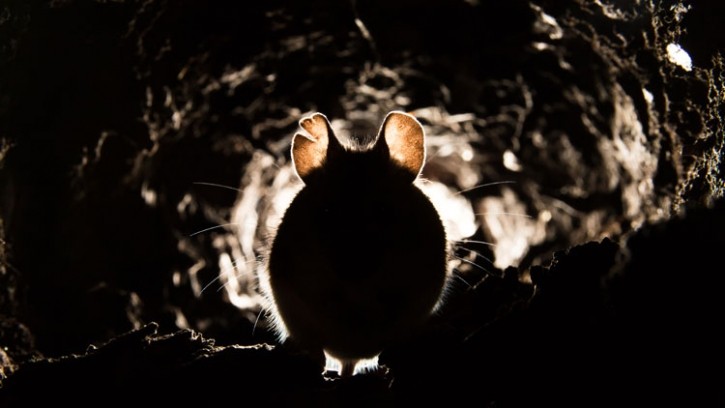Promotion
Keeping your kitchen rodent-free: Pest prevention in restaurants

In the culinary world, we’ve seen our fair share of remarkable rodent tales, from the Pied Piper to Ratatouille’s Remy, the dreamer-rat-turned-world-class-chef. However, in reality, the rise in rodent populations hasn’t exactly been a cause for celebration.
Post-pandemic, with restaurants reopen, rodents have become bolder, braver and more innovative in their quest for food. This makes it more crucial to ensure premises remain pest-free havens. With the right approach, the industry can turn this challenge into an opportunity to showcase its dedication to cleanliness and food safety.
Just like the rest of the world, rodents have had to adapt to the changing landscape post-pandemic. The stress of finding new food sources resulted in the death of hundreds of thousands, if not millions, of rats. But with operations resuming and warmer weather providing the ideal breeding conditions, rodent populations have seen a resurgence.
However, this does not mean we are at their mercy. By taking proactive steps, restaurants can keep free from uninvites furry guests.
The calculation of fines is far too complex to go into in an article such as this, but a pertinent example is that the suggested fine range for a business with a turnover over £50 million in medium rather than severe circumstances is between £35,000 and £220,000.
All of this is further exacerbated by the risk of significant adverse publicity for the business and the prospect that customers, both existing and potential, will be deterred from visiting the premises.
Rather than fretting over fines and potential closures, let’s focus on proactive measures to keep kitchens rodent-free and your customers happy.
1. Implementing a robust food safety policy
Ensure that you have a clear and comprehensive Food Safety Policy that highlights the risks of pests and provides clear guidance to staff on identifying and addressing any signs of infestation promptly.
2. Pest control contractor
Enlist the services of a competent pest control contractor to carry out regular visits to the premises to check for signs of pests which may not be immediately obvious to staff. Should baiting or pest-proofing works be recommended, then ensure that there is a clear documentary trail to show that the recommendations have been followed. Should problems be discovered then make sure that the frequency of visits thereafter is increased in the short to medium term to ensure that the problem is eliminated.
3. Prioritise cleanliness
Maintaining impeccable cleanliness is key to deterring rodents. Lack of proper cleaning and the presence of rodents normally go hand in hand and it is therefore imperative that any business invests time and money in ensuring that they have adequate preventative systems.
- Seal entry points: Inspect the premises for cracks, holes, and gaps, and seal them
- Proper waste management: Use tightly sealed containers for storing food and dispose of garbage promptly in rodent-proof bins
- Regular inspections: Conduct routine inspections of the kitchen and surrounding areas to detect signs of rodent activity, such as droppings, gnaw marks, and nests
- Maintain cleanliness: Regularly clean and sanitise all kitchen surfaces, floors, and storage areas to remove food debris and spills
Proper cleaning and pest control need to appear prominently in any Food Safety Policy, with staff also being given adequate training on that policy and their general food safety responsibilities.
Together with training records, daily cleaning records should be kept. It makes sense for all of this to be spot-checked by unannounced external audits.
It may be that in the worst scenarios, a business has to take the bold decision to close the kitchen for proper pest proofing and cleaning to take place.
Whilst a voluntary closure might seem counter-intuitive, it is surely better than the adverse publicity that comes with the court appearance which inevitably follows the service of a formal notice
4. Staff training
Staff must be trained to spot the signs of rodents and to take appropriate action should their presence be detected. Clear signs of rodents include:
- Gnaw marks: A clear telltale sign that your restaurant may be hosting mice/rats is little gnaw marks. Rodents gnaw to create better access points
- Droppings: About the size of a grain of rice
- Rub marks: Dirty grease marks along your walls
- Damaged items: Similar to gnaw marks, rodents may nibble on furniture, wires and other items
- Actual sightings: Rodents do not travel far from their nests. So the sight of one is enough to take action as it is highly likely there are many more nearby
5. Thorough investigations
Investigations can arise as a result of a random inspection or indeed as a result of a customer complaint, such as the sighting of a mouse within a restaurant.
What inevitably follows is a thorough examination of the premises with a particular focus on the food preparation areas. If evidence of rodents is found then there is a risk that the premises are immediately closed by virtue of a Hygiene Emergency Protection Notice following a determination by the relevant environmental health officer (subsequently ratified by a court) that there is an imminent risk to public health. This will almost inevitably occur where evidence of an infestation is found.
In conclusion, operators, need to implement a comprehensive approach that prioritises cleanliness, proactive measures, and staff empowerment, such that restaurants can ensure their kitchens remain havens of hygiene and delight their customers.
For further information on mice infestation or general health and safety, please feel free to contact any of our licensing solicitors.





